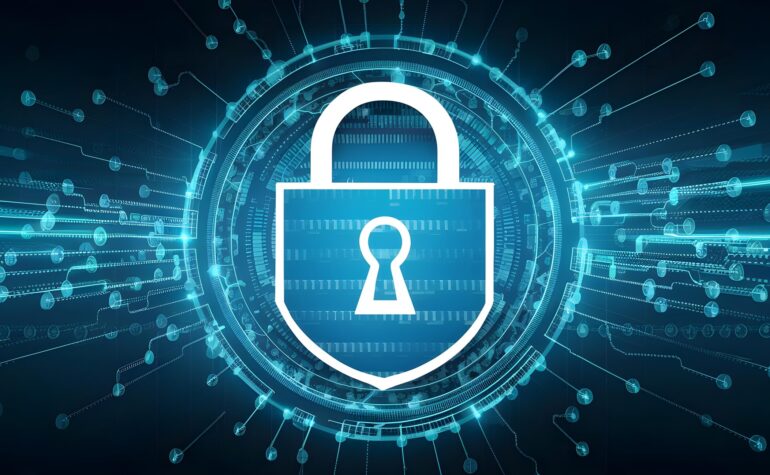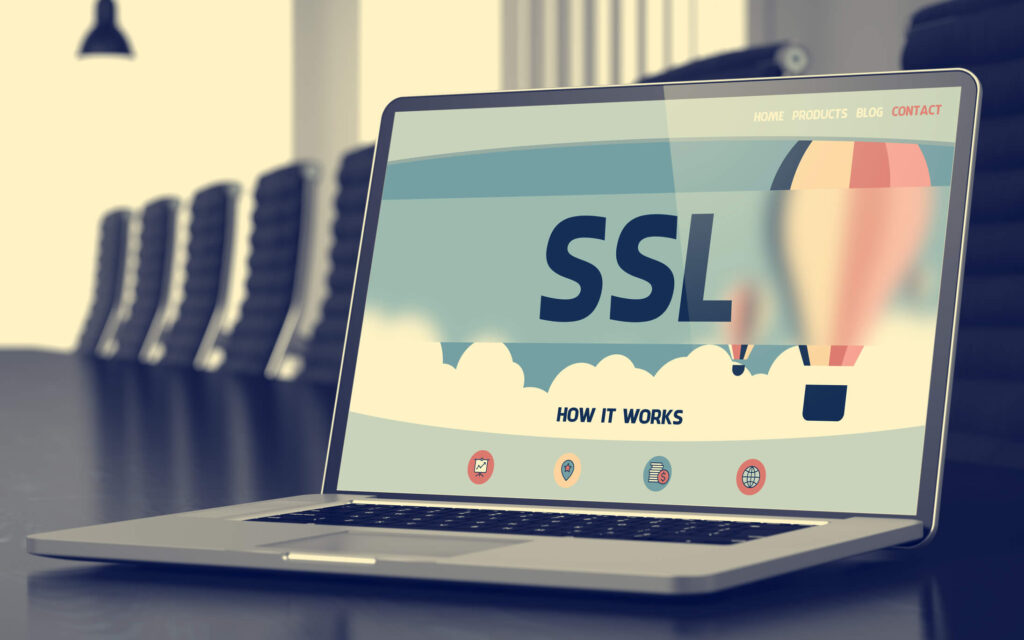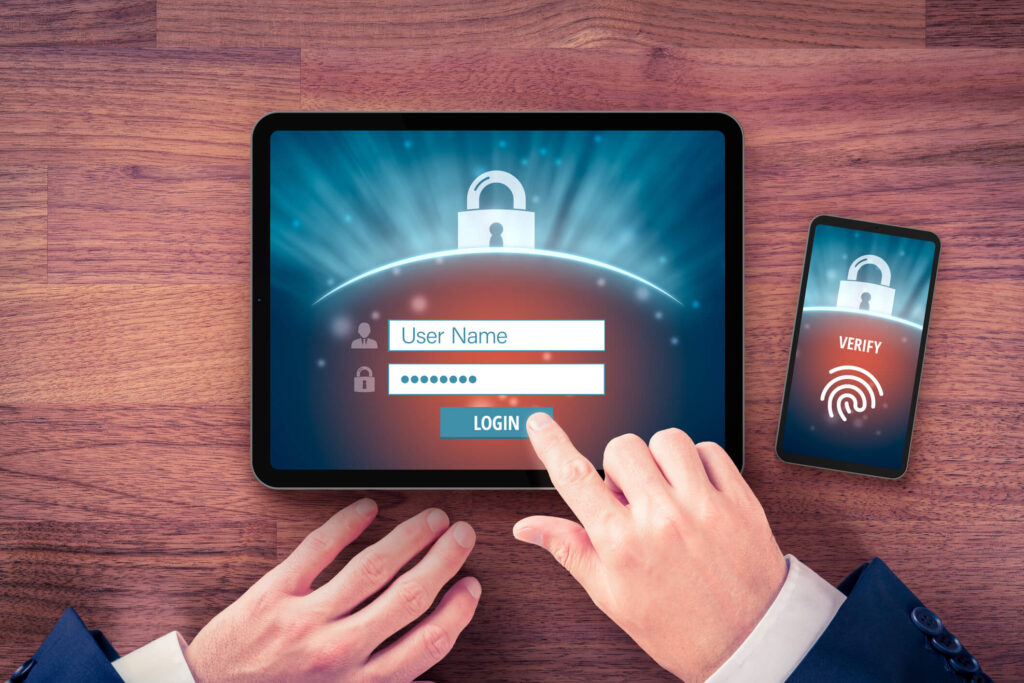Best Credit Card Processing Solutions Tailored for Every Industry

By admin April 29, 2024
In today’s digital age, online transactions have become increasingly prevalent. From online shopping to banking and financial transactions, the convenience and accessibility of conducting business online have revolutionized the way we interact with businesses and individuals. However, with this convenience comes the need for robust security measures to protect sensitive data and prevent unauthorized access. In this article, we will explore the best security practices for handling online transactions, including the role of encryption, SSL certificates, two-factor authentication, choosing a secure payment gateway, secure password practices, recognizing and avoiding phishing attacks, regularly updating software and security patches, and educating users on security awareness.
The rise of online transactions and the need for robust security measures

The advent of the internet has transformed the way we conduct business and interact with others. Online transactions have become increasingly popular due to their convenience, speed, and accessibility. According to Statista, global e-commerce sales are projected to reach $6.54 trillion by 2022, highlighting the significant growth and importance of online transactions.
However, with the rise of online transactions comes the need for robust security measures. Cybercriminals are constantly evolving their tactics to exploit vulnerabilities and gain unauthorized access to sensitive data. Inadequate security practices can have severe consequences, including financial loss, identity theft, and damage to reputation.
The potential risks and consequences of inadequate security practices
Inadequate security practices can expose individuals and businesses to various risks and consequences. One of the most significant risks is the loss of sensitive data, such as credit card information, personal identification details, and financial records. This data can be used by cybercriminals for fraudulent activities, leading to financial loss and potential legal implications.
Moreover, inadequate security practices can result in unauthorized access to accounts and systems, allowing cybercriminals to manipulate or steal funds, compromise personal information, or disrupt business operations. This can lead to reputational damage, loss of customer trust, and potential legal liabilities.
The Role of Encryption in Securing Online Transactions
Encryption plays a crucial role in securing online transactions by protecting sensitive data from unauthorized access. Encryption is the process of converting plaintext into ciphertext, making it unreadable to anyone without the decryption key. This ensures that even if the data is intercepted, it remains secure and confidential.
Different encryption methods used in online transactions
There are various encryption methods used in online transactions, each with its own level of security. The most commonly used encryption method is the Secure Sockets Layer (SSL) protocol, which encrypts data transmitted between a web server and a user’s browser. SSL uses a combination of symmetric and asymmetric encryption algorithms to ensure the confidentiality and integrity of data.
Another widely used encryption method is Transport Layer Security (TLS), which is an updated version of SSL. TLS provides enhanced security features and is considered more secure than SSL. It uses stronger encryption algorithms and supports the latest security protocols.
Implementing Secure Socket Layer (SSL) Certificates

SSL certificates play a crucial role in establishing secure connections between web servers and users’ browsers. These certificates verify the authenticity of the website and encrypt the data transmitted between the server and the browser.
Understanding SSL certificates and their role in establishing secure connections
SSL certificates are digital certificates that are issued by trusted Certificate Authorities (CAs). These certificates contain information about the website, such as its domain name, organization details, and public key. When a user visits a website with an SSL certificate, their browser verifies the authenticity of the certificate and establishes a secure connection with the server.
The benefits of using SSL certificates for online transactions
Using SSL certificates for online transactions offers several benefits. Firstly, it ensures the confidentiality of sensitive data by encrypting it during transmission. This protects the data from interception and unauthorized access.
Secondly, SSL certificates provide authentication, assuring users that they are interacting with a legitimate website and not a fraudulent one. This helps build trust and confidence among users, leading to increased customer satisfaction and loyalty.
Furthermore, SSL certificates enable the use of HTTPS, which is a secure version of HTTP. Websites using HTTPS display a padlock icon in the browser’s address bar, indicating a secure connection. This visual cue reassures users that their data is being transmitted securely.
Two-Factor Authentication (2FA) for Enhanced Security

Two-Factor Authentication (2FA) adds an extra layer of security to online transactions by requiring users to provide two forms of identification before accessing their accounts. This significantly reduces the risk of unauthorized access, even if the user’s password is compromised.
Explaining the concept of 2FA and its effectiveness in preventing unauthorized access
Two-Factor Authentication (2FA) is a security measure that requires users to provide two different types of identification before accessing their accounts. These identification factors typically fall into three categories: something the user knows (e.g., a password), something the user has (e.g., a mobile device), and something the user has (e.g., biometric data).
By requiring two different types of identification, 2FA adds an extra layer of security. Even if a cybercriminal manages to obtain a user’s password, they would still need access to the second factor (e.g., a mobile device) to gain unauthorized access.
Different types of 2FA methods and their implementation in online transactions
There are several types of 2FA methods that can be implemented in online transactions. One common method is SMS-based authentication, where a one-time verification code is sent to the user’s mobile device via SMS. The user must enter this code along with their password to access their account.
Another method is app-based authentication, where a mobile app generates a unique verification code that the user must enter along with their password. These apps often use time-based algorithms to generate codes that expire after a certain period, adding an extra layer of security.
Biometric authentication is another form of 2FA that uses unique physical or behavioral characteristics, such as fingerprints, facial recognition, or voice recognition, to verify the user’s identity. This method provides a high level of security as biometric data is difficult to replicate.
Choosing a Secure Payment Gateway
Selecting a reputable and secure payment gateway is crucial for ensuring the security of online transactions. A payment gateway is a service that facilitates the transfer of funds between a customer and a merchant, securely processing payment information.
Evaluating the importance of selecting a reputable and secure payment gateway
Choosing a reputable and secure payment gateway is essential for protecting sensitive payment information and preventing unauthorized access. A secure payment gateway employs various security measures, such as encryption, tokenization, and fraud detection systems, to ensure the confidentiality and integrity of payment data.
Moreover, a reputable payment gateway has a proven track record of providing secure and reliable services. It is important to research and evaluate the reputation and security practices of different payment gateways before selecting one for online transactions.
Factors to consider when choosing a payment gateway for online transactions
When choosing a payment gateway for online transactions, several factors should be considered. Firstly, the security features offered by the payment gateway should be assessed. This includes encryption methods, fraud detection systems, and compliance with industry standards, such as Payment Card Industry Data Security Standard (PCI DSS) compliance.
Secondly, the reputation and reliability of the payment gateway should be evaluated. This can be done by researching customer reviews, checking for any security breaches or incidents in the past, and ensuring that the payment gateway has a robust infrastructure to handle transactions securely.
Additionally, the ease of integration with existing systems, the availability of customer support, and the cost of using the payment gateway should also be taken into consideration.
Secure Password Practices for Online Transactions
Using strong and unique passwords is crucial for protecting online transactions from unauthorized access. Weak passwords can be easily guessed or cracked, providing cybercriminals with access to sensitive data and accounts.
The significance of strong and unique passwords in protecting online transactions
Strong and unique passwords play a vital role in protecting online transactions by preventing unauthorized access to accounts. A strong password is one that is difficult to guess or crack, typically consisting of a combination of uppercase and lowercase letters, numbers, and special characters.
Using weak passwords, such as common words or easily guessable information, significantly increases the risk of unauthorized access. Cybercriminals often use automated tools to guess passwords, and weak passwords can be easily cracked within seconds.
Tips for creating and managing secure passwords
Creating and managing secure passwords is essential for protecting online transactions. Here are some tips for creating and managing secure passwords:
- Use a combination of uppercase and lowercase letters, numbers, and special characters.
- Avoid using common words, personal information, or easily guessable patterns.
- Use a unique password for each online account to prevent unauthorized access if one password is compromised.
- Consider using a password manager to securely store and generate strong passwords.
- Regularly update passwords and avoid reusing old passwords.
- Enable multi-factor authentication whenever possible to add an extra layer of security.
Recognizing and Avoiding Phishing Attacks
Phishing attacks pose a significant threat to online transactions, as they aim to deceive users into revealing sensitive information, such as passwords, credit card details, or personal identification information. Recognizing and avoiding phishing attempts is crucial for protecting online transactions from fraud and unauthorized access.
Understanding the threat of phishing attacks in online transactions
Phishing attacks involve cybercriminals impersonating legitimate entities, such as banks, e-commerce websites, or government agencies, to trick users into revealing sensitive information. These attacks are typically carried out through email, text messages, or fake websites that closely resemble the legitimate ones.
Phishing attacks can have severe consequences, including financial loss, identity theft, and unauthorized access to accounts. Cybercriminals often use social engineering techniques to manipulate users into providing their personal information, such as creating a sense of urgency or fear.
Tips for identifying and avoiding phishing attempts
Identifying and avoiding phishing attempts is crucial for protecting online transactions. Here are some tips for identifying and avoiding phishing attempts:
- Be cautious of unsolicited emails or messages asking for personal information or financial details.
- Check the sender’s email address or phone number for any inconsistencies or suspicious elements.
- Look for spelling or grammatical errors in the email or message, as these are common signs of phishing attempts.
- Avoid clicking on suspicious links or downloading attachments from unknown sources.
- Verify the legitimacy of a website by checking for secure connections (HTTPS) and looking for trust indicators, such as SSL certificates.
- Be wary of emails or messages that create a sense of urgency or fear, as these are often tactics used by cybercriminals to manipulate users.
Regularly Updating Software and Security Patches
Keeping software and systems up to date is crucial for enhancing the security of online transactions. Software updates and security patches often include bug fixes, vulnerability patches, and security enhancements that address known security issues.
The importance of keeping software and systems up to date for enhanced security
Software and systems that are not regularly updated are more vulnerable to security breaches and unauthorized access. Cybercriminals often exploit known vulnerabilities in outdated software to gain unauthorized access or compromise sensitive data.
Regular software updates ensure that the latest security patches and enhancements are applied, reducing the risk of security breaches and protecting online transactions from potential threats.
Best practices for updating software and applying security patches
To ensure the security of online transactions, it is important to follow best practices for updating software and applying security patches. Here are some best practices to consider:
- Enable automatic updates whenever possible to ensure that software and systems are regularly updated.
- Regularly check for updates manually if automatic updates are not available.
- Prioritize critical security updates and patches to address known vulnerabilities.
- Keep all software, including operating systems, web browsers, and plugins, up to date.
- Use reputable software sources and avoid downloading software from unknown or untrusted sources.
- Regularly scan systems for vulnerabilities using security tools or services.
Educating Users on Security Awareness
User awareness plays a crucial role in preventing security breaches during online transactions. Educating users about security best practices and potential threats can significantly reduce the risk of unauthorized access and fraud.
The role of user awareness in preventing security breaches during online transactions
Users are often the weakest link in the security chain, as their actions can inadvertently expose sensitive data or compromise security measures. Educating users about security awareness helps them understand the potential risks and consequences of inadequate security practices, empowering them to make informed decisions and take necessary precautions.
By raising awareness about common threats, such as phishing attacks, weak passwords, or insecure connections, users can actively contribute to the security of online transactions.
Strategies for educating users about security best practices
Educating users about security best practices requires a comprehensive approach that includes training, awareness campaigns, and ongoing communication. Here are some strategies for educating users about security best practices:
- Provide regular training sessions or workshops on security awareness, covering topics such as password security, phishing attacks, and secure browsing habits.
- Develop and distribute educational materials, such as brochures, posters, or online resources, that highlight security best practices.
- Conduct simulated phishing exercises to test users’ awareness and provide immediate feedback and training.
- Establish clear security policies and guidelines that outline best practices for online transactions.
- Encourage open communication and reporting of security incidents or suspicious activities.
- Provide ongoing reminders and updates about security best practices through newsletters, emails, or internal communication channels.
FAQs:
Q1. What is the most secure encryption method for online transactions?
The most secure encryption method for online transactions is currently considered to be AES (Advanced Encryption Standard) with a 256-bit key. This encryption standard is robust against brute force attacks and is widely adopted by governments and industries for secure data transmission. It ensures that sensitive information such as credit card numbers and personal details remain protected from cyber threats.
Q2. How does two-factor authentication enhance the security of online transactions?
Two-factor authentication (2FA) enhances security by requiring two forms of verification before granting access to an account or completing a transaction. Typically, this involves something you know (a password) and something you have (a mobile device to receive a verification code). By implementing 2FA, even if a hacker obtains your password, they would still need the second factor to access your account, significantly reducing the likelihood of unauthorized access.
Q3. Can I trust any payment gateway for my online transactions?
Not all payment gateways offer the same level of security. When trusting a payment gateway for online transactions, it’s crucial to choose one that adheres to stringent security standards like PCI DSS (Payment Card Industry Data Security Standard). Look for gateways that offer robust fraud detection and prevention measures, and read reviews or obtain recommendations from trusted sources before deciding.
Q4. How often should I update my software and security patches?
It is essential to update your software and apply security patches as soon as they become available. Manufacturers frequently release these updates to fix vulnerabilities that could be exploited by hackers. Regular updates help protect your devices from the latest threats. Setting your devices to update automatically can ensure you’re always running the most secure versions of your software.
Q5. What are some common signs of a phishing attempt?
Common signs of phishing attempts include unsolicited emails or messages that contain urgent language, prompting immediate action such as clicking on a link or providing personal information. These messages often have poor grammar or spelling errors and may address you in a generic manner rather than by your name. Legitimate companies typically do not request sensitive information through insecure channels like email. Always verify the authenticity of a request by contacting the company directly through official channels.
Conclusion
In conclusion, securing online transactions is of utmost importance to protect sensitive data and prevent unauthorized access. By implementing encryption, SSL certificates, two-factor authentication, and other best practices discussed in this article, individuals and businesses can significantly reduce the risks associated with online transactions. Regular software updates, user education, and vigilance against phishing attempts further enhance security. By adopting these practices, we can ensure safer and more secure online transactions for everyone involved.
